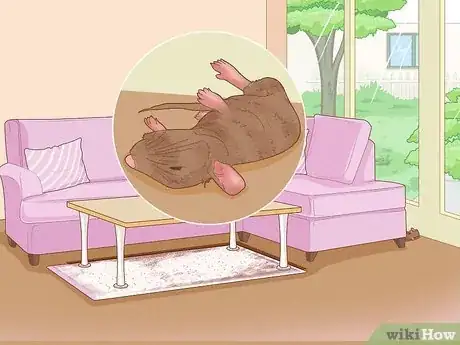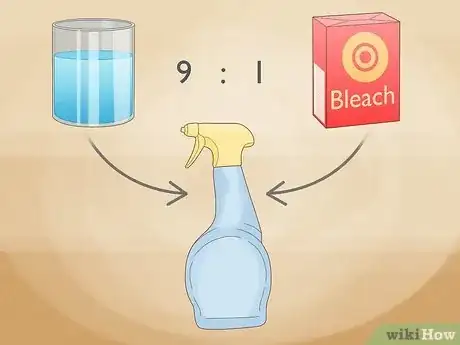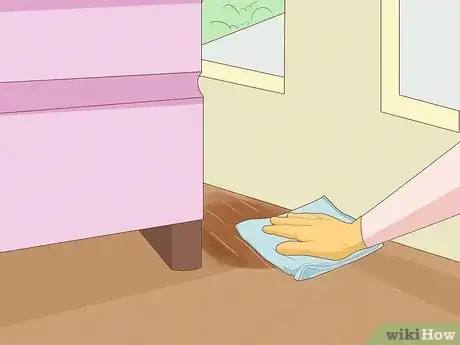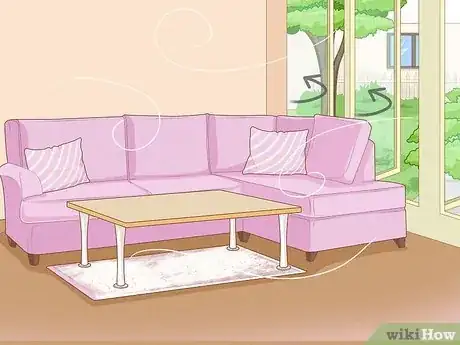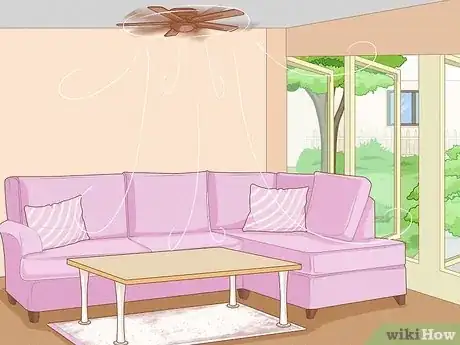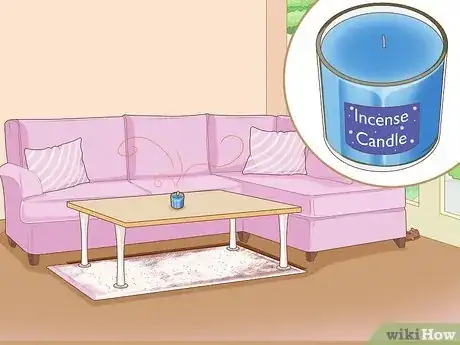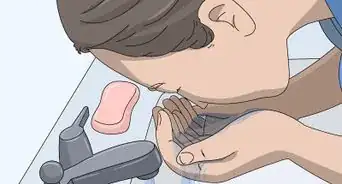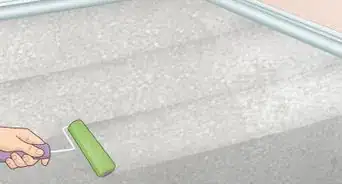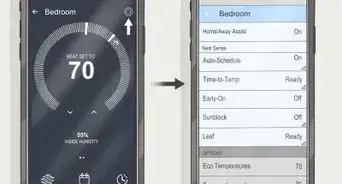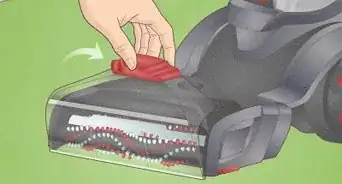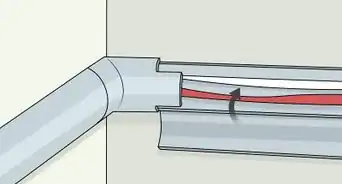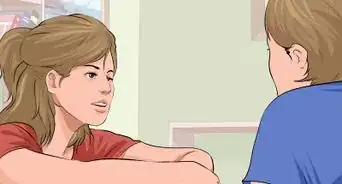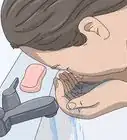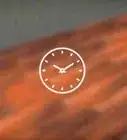This article was co-authored by wikiHow staff writer, Eric McClure. Eric McClure is an editing fellow at wikiHow where he has been editing, researching, and creating content since 2019. A former educator and poet, his work has appeared in Carcinogenic Poetry, Shot Glass Journal, Prairie Margins, and The Rusty Nail. His digital chapbook, The Internet, was also published in TL;DR Magazine. He was the winner of the Paul Carroll award for outstanding achievement in creative writing in 2014, and he was a featured reader at the Poetry Foundation’s Open Door Reading Series in 2015. Eric holds a BA in English from the University of Illinois at Chicago, and an MEd in secondary education from DePaul University.
Learn more...
If you smell something funky in your home and stumble upon the culprit—a dead mouse—you might be wondering what to do next. Not only do you have a corpse to deal with, but what do you do about that unpleasant aroma? Luckily, this shouldn’t prove to be too much of a challenge. In this article, we’ll break down the entire process from beginning to end so that you can get your living space back in tip top shape.
Things You Should Know
- Wear rubber gloves and a dust mask. Seal the mouse in 1-2 plastic bags and toss it in the trash.
- Use a solution that’s 9-parts water and 1-part bleach to spray the area where you found the mouse. Wipe the area with a paper towel.
- Deodorize your home up by leaving the windows open, running fans, and lighting some candles or incense.
Steps
Disposing of the Mouse
-
1Gear up with some rubber gloves and a dust mask. Mice already carry diseases to begin with, but a dead mouse is especially likely to harbor some nasty bacteria or viruses. Once you find the mouse, throw on a dust mask and put on some thick rubber gloves.[1]
- If you don’t have rubber gloves, you can use nitrile or plastic ones.
-
2Locate the mouse's body. The stronger the rotten cabbage smell is, the closer you are to the mouse. Pull back appliances and look in cupboards, since mice often hide when they’re dying. If you start noticing flies attracted to one area, investigate carefully to find the culprit. If you can’t find the mouse, call a professional.[2]
- Frankly, if the animal is trapped in your wall, you may be better off just trying to mask the smell and waiting for the mouse to decompose.
- If you do want to get a mouse in your walls, put small holes in your wall to try and locate the source. Once you find and remove the mouse, you can patch the wall.
Advertisement -
3Put the corpse inside of two airtight plastic bags. Grab two plastic bags (Ziploc-style zipper bags are ideal). Lift the mouse up by the base of the tail and put it inside of the first bag. Seal the first bag and then set that inside the other bag. This will prevent any odors or bacteria from getting out.[3]
- If the mouse is in a trap, you can either throw the trap out with the mouse, or soak it in bleach and water after removing the mouse.
-
4Discard the bagged-up mouse in your normal trash. Set the bag in your trash. To play it extra safe, take your trash outside right away. You don’t need to take any extra steps when it comes to discarding a mouse carcass, so sleep tight knowing the mouse is fine in the normal trash.[4]
- As tempting as it may be to toss a tiny mouse in the toilet and flush it, don’t do it. The mouse can get stuck in your pipes quite easily, and it’s really bad for your septic system even if it does make it through.
-
5Wash your rubber gloves with bleach and water. Before you remove the rubber gloves, you need to sterilize them. Pour a capful of bleach onto the gloves and scrub the fingers thoroughly. Run the gloves under warm water and wash away the bleach. Then you can remove the gloves and dust mask.[5]
- If you’re uncomfortable reusing the gloves in the future (which is totally understandable), feel free to throw them out after you give them a bleach wash.
- You don’t want to take the gloves off right away because you may accidentally spread whatever virus or bacteria you picked up when you grabbed the mouse.
Disinfecting the Area
-
1Mix a solution of 9-parts water and 1-part bleach in a spray bottle. Put your gloves and dust mask back on. Use a 1:9 ratio of bleach to water to avoid damaging whatever surface you’re applying the bleach to.[6] Diluted bleach should be safe on most surfaces, but you may want to spot check the solution first in an inconspicuous area to ensure that the diluted bleach won’t stain or damage the surface.[7]
- Do not mix the bleach with any other cleaning agent (especially vinegar, which will create chlorine gas). Bleach can react in dangerous ways with other cleaning agents.
- Vinegar and baking soda are great deodorizers, but they won’t do as good a job at sanitizing and disinfecting as bleach will.
- Alternatively, you can use a general disinfectant cleaning product, like Lysol. So long as it’s designed to disinfect surfaces, it’ll work.
-
2Spritz the area where the mouse was found with the solution. Shake the spray bottle up to mix the solution thoroughly. Spray the area multiple times with a liberal amount of your bleach solution. This will kill any virus or bacteria that the mouse left behind.[8]
-
3Scrub the area with a paper towel and discard the towel immediately. Fold up a few paper towels and work the bleach into the floor. Use firm, circular motions to work the watered-down bleach into the flooring. Once you’ve scrubbed the area thoroughly, discard the paper towel immediately in the trash.[9]
- You can do this multiple times if you want to completely ensure that you’ve fully cleaned the area.
-
4Wipe the bleach up with a damp paper towel if you’d like. The bleach and water will dissipate on their own. However, if you don’t want to let the bleach sit for too long, grab a paper towel and dampen it with water. Wipe the area you scrubbed to soak up any excess bleach. Then, dry the area with another paper towel. Dispose of all of it immediately.[10]
- You’re now good to go. Short of any lingering odors in the air, your problem has been solved safely!
Deodorizing Your Home
-
1Open as many windows as you can. Whether or not you smell anything, it’s a good idea to air your home out just to purify the air. Luckily, getting rid of this odor isn’t a radical challenge. Start by opening all the windows in the room where you’re working.[11]
- You do not need to air your home out after cleaning up after the mouse. You only need to do this if you smell anything strange.
- If the mice were around for a while, you might notice a sticky, musky smell. That’s mouse urine. You’ll need to take special care to remove mouse urine odors.
-
2Turn the air on to the highest level you can and run some fans. If you’ve got a window unit, turn it on. Otherwise, turn your central AC fan on. If you’ve got ceiling fans, turn them on. If you’ve got any table or standing fans, bring those into the room and point them at the open windows. Direct all the airflow out of your home. This will help to drive any bad smells outside.[12]
- Leave the fans running for as long as you reasonably can. With the mouse gone, you shouldn’t have any problem gradually removing the smell.
-
3Improve the smell in your home with candles or incense. While your fans are running, or after the smell has dissipated, do something to improve the smell in your home. If you’ve got some scented candles, light them. Alternatively, you can light some incense or sage. Other options include:[13]
- Roasting coffee beans or orange peels in your oven at a low temperature for 30 minutes or so. Orange and coffee particles are known deodorizers.
- Use a plug-in scent product to fill the room with a pleasant smell over a longer period of time.
- Set charcoal briquettes out around your home to absorb the odor particles in the air.
References
- ↑ https://myhealth.alberta.ca/alberta/pages/Pests-house-mouse.aspx
- ↑ https://www.orkin.com/pests/rodents/mouse-control/house-mice/how-to-find-a-dead-mouse-in-the-house
- ↑ https://www.cdc.gov/rodents/prevent_infestations/clean_up.html
- ↑ https://www.cdc.gov/rodents/prevent_infestations/clean_up.html
- ↑ https://myhealth.alberta.ca/alberta/pages/Pests-house-mouse.aspx
- ↑ https://www.cdc.gov/rodents/prevent_infestations/clean_up.html
- ↑ https://www.bobvila.com/articles/dead-mouse-smell/
- ↑ https://www.cdc.gov/rodents/prevent_infestations/clean_up.html
- ↑ https://myhealth.alberta.ca/alberta/pages/Pests-house-mouse.aspx
- ↑ https://myhealth.alberta.ca/alberta/pages/Pests-house-mouse.aspx
- ↑ https://www.cdc.gov/rodents/prevent_infestations/clean_up.html
- ↑ https://www.bobvila.com/slideshow/10-instant-cures-for-any-kitchen-odor-50094
- ↑ https://romesentinel.com/stories/what-to-do-when-an-animal-dies-in-your-walls-or-crawl-space,112168

